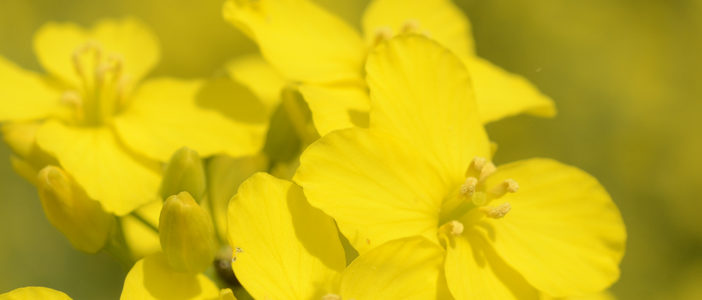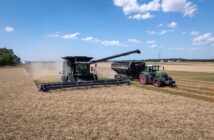Oilseed rape crops continue to be a mixed bag, with some promising crops and some less so.
BASF Agronomy Managers have been keeping a close eye on crops across their areas. In the south Andrew Clune said, “There are all sorts of crops out there and in some cases there are all sorts of crops even in the one field. Crops are now coming into flowering and the full effects of cabbage stem flea beetle (csfb) larvae are being seen.
In a minority of cases the csfb larvae have completely killed the plant, elsewhere some plants are stunted and relying on secondary branching and others look absolutely fine. I think the crop will compensate, unless you see lots of plant death I wouldn’t be ripping the crop up.”
Further north, it’s a brighter outlook, Mathew Barnes in Yorkshire, said, “Crops have come through pretty well really, we have probably only lost 10% of crops through csfb, however, they are now affecting how the crops come into flower. It is going to make spray timing very difficult.
Because of the variablity, pollen beetles have been in crops for much longer, they are almost going from one plant to the next due to the staggered flowering. Their numbers never reached threshold so growers haven’t had to spray and now they are beneficial to the crop.”
Across Scotland crops are at differing growth stages, start of flowering to just in yellow bud. Scott Milne said, “There have been no issues with csfb larvae here but in some crops pigeon damage has resulted in different growth stages within fields.” He added, “Recent frosts have kinked the oilseed rape stems; however it shouldn’t have done much damage.”
Jonathan Helliwell reports that in the Home Counties and the Cotswolds crops are varied too. He said, “Because of the intermittent showery weather and warm days Sclerotiniahas to be the focus for oilseed rape growers at the moment. Check the monitoring sites and the current risk predictions provided by BASF and ADAS which can be found at ahdb.org.uk/sclerotinia
The flowering period is likely to be slightly longer this year on the back of the infield variation. If we do get Sclerotinia, holes in the stem where csfb larvae exit the plant will be an entry site for infection so we do need to be quite robust in terms of flowering spray. I think we also have to plan for potentially a two spray strategy this year, purely because of the flowering variation.
If there are risks identified then apply a robust boscalid-based spray such as Filan®+tank mix product to protect against Sclerotinia. These will give up to 21-24 days protection, however if there is likely to be petal fall after this time then growers should consider applying a second spray.”
In East Anglia, Matthew Keane will be including boscalid in his flowering spray. He said, “it is an ideal flowering spray, giving you prolonged protection from Sclerotiniaand it works well as a resistance management tool for Light Leaf Spot (LLS).In the control of LLS a lot of emphasis is placed on azole products and there are concerns about fungicide insensitivity. You may not think you have Light Leaf Spot (LLS) at flowering but if you look down at the bottom of the crop there will be Light Leaf Spot (LLS) somewhere in those plants, so from a resistance management perspective if you put another azole on you are increasing the selection pressure.
“ Keeping leaves green is important for seed-fill.”Sarah Middleton BASF Campaign Manager Oilseed Rape explained, “In oilseed rape, leaves, stems and pods are all photosynthetically active and contribute to yield but the leaves are twice as active as the stems or pods. In order to maximise yield, growers need to increase or maintain the duration and size of the healthy leaf tissue during the seed filling period. ADAS have proven that Filan(R) increases the green leaf area duration and we know that boscalid (& dimoxystrobin) reduce the stress hormone ethylene in the plant, so even in the absence of disease the extended maintenance of green leaf tissue area resulted in an average yield response of 0.28t/ha. Filan®.”




